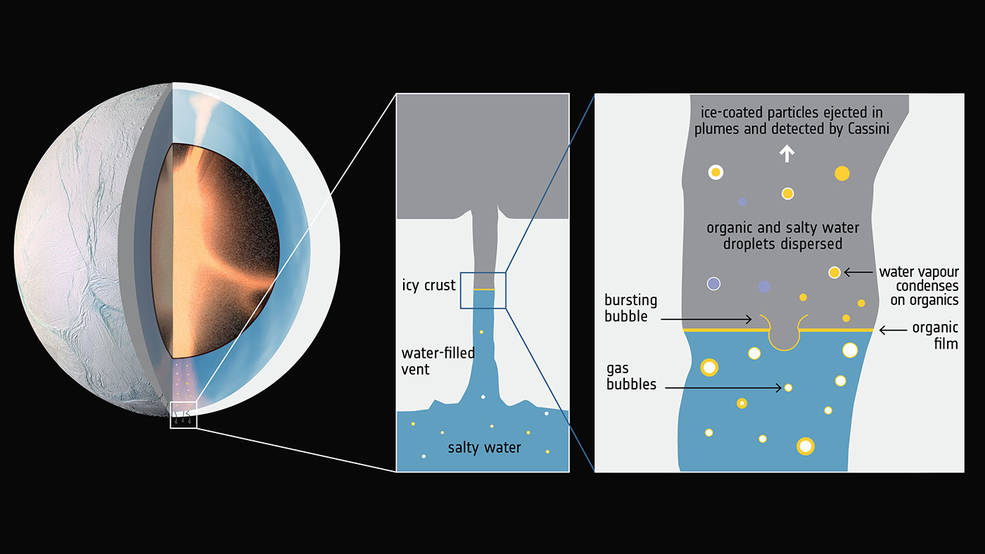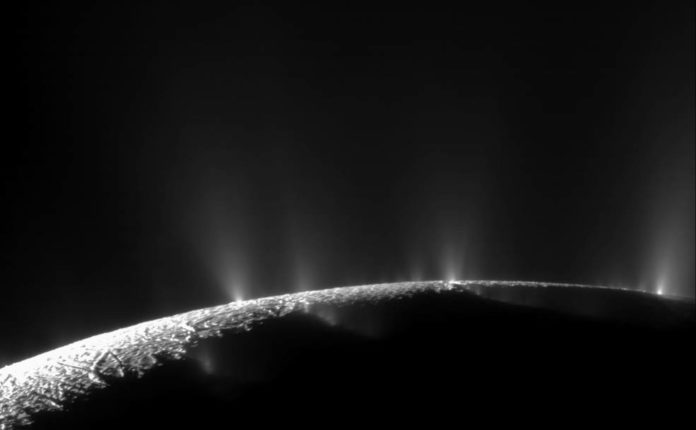Data from NASA‘s Cassini spacecraft uncover complex organic molecules starting from Saturn’s icy moon Enceladus, reinforcing the possibility that this ocean world hosts conditions suitable for life. The research comes about show considerably bigger, heavier particles than ever before.
Earlier, Cassini had captured small, relatively common organic molecules at Enceladus, consisting of hundreds of atoms are rare beyond Earth. When analyzing the molecules, scientists discovered that the large complex molecules, along with liquid water and hydrothermal activity, supports the hypothesis that the ocean of Enceladus may be a habitable environment for life.
Powerful hydrothermal vents mix up material from the moon’s water-filled, porous core with water from the moon’s massive subsurface ocean – and it is released into space, in the form of water vapor and ice grains. A team led by Frank Postberg and Nozair Khawaja of the University of Heidelberg, Germany, continues to examine the makeup of the ejected ice and has recently identified fragments of large, complex organic molecules.

Credits: ESA; F. Postberg et al (2018)
Scientists reported that such molecules are the result of the complex chemical process, including those related to life, or they can come from primordial material in some meteorites. But, in case of Enceladus, they are more likely to be generated by the hydrothermal activity.
Scientists think that the organic material is injected into the ocean by hydrothermal vents on the floor of Enceladus’ ocean – something akin to the hydrothermal sites found at the bottom of the oceans on Earth, which are one of the possible environments that scientists investigate for the emergence of life on our own planet.
Frank Postberg from the University of Heidelberg, Germany said, “In my opinion, the fragments we found are of hydrothermal origin; in the high pressures and warm temperatures we expect there, it is possible that complex organic molecules can arise.”
On Enceladus, bubbles of gas, rising through miles of ocean, could bring up organic material from depths, where they could form a thin film floating on the ocean surface and in cracks of vents, in the interior of the moon, beneath its icy shell.
After rising near the top of the ocean, the bubbles may burst or otherwise disperse the organics, where they were detected by Cassini.
Cassini Project Scientist Linda Spilker of NASA’s Jet Propulsion Laboratory, Pasadena, California said, “Continuing studies of Cassini data will help us unravel the mysteries of this intriguing ocean world.”
The results are published today in Nature.
